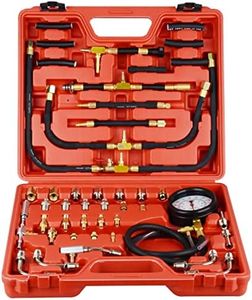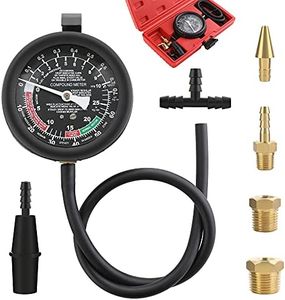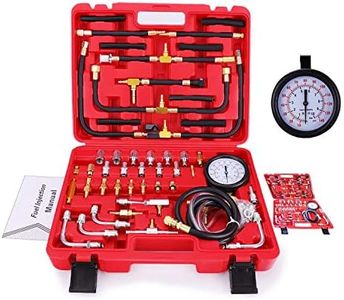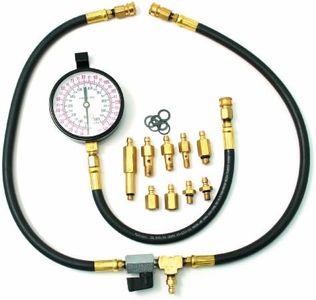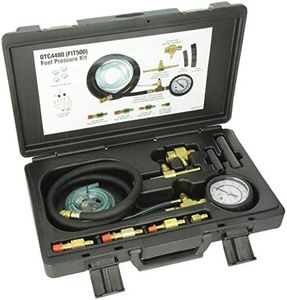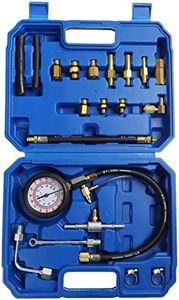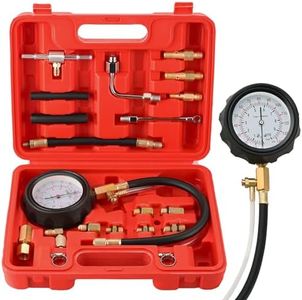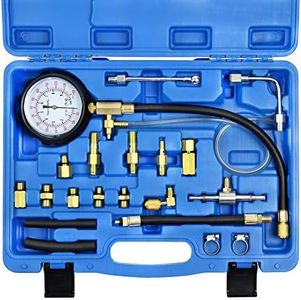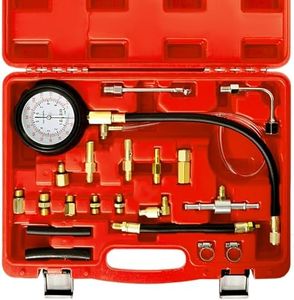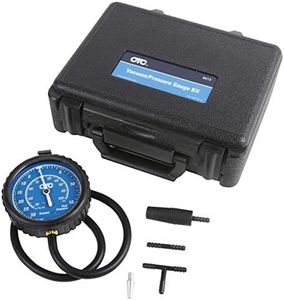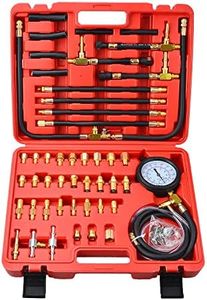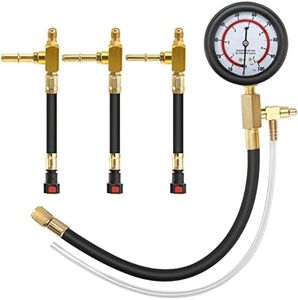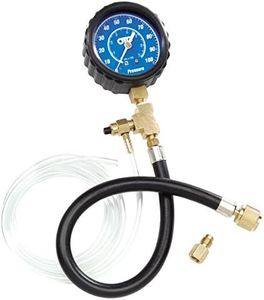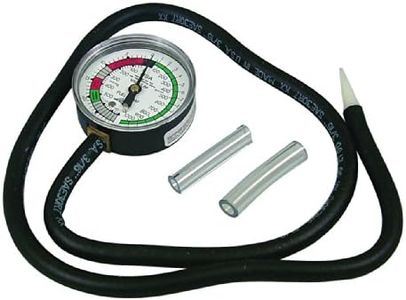We Use CookiesWe use cookies to enhance the security, performance,
functionality and for analytical and promotional activities. By continuing to browse this site you
are agreeing to our privacy policy
10 Best Fuel Pressure Testers
From leading brands and best sellers available on the web.By clicking on a link to a third party's website, log data is shared with that third party.
Buying Guide for the Best Fuel Pressure Testers
Choosing a fuel pressure tester is all about making sure you get a tool that matches both your vehicle's requirements and your comfort using automotive tools. The basic job of a fuel pressure tester is to check the pressure in your engine’s fuel system—an essential check when diagnosing fuel system issues. Different engines and vehicles use different types of fuel injection and fuel delivery setups, so understanding what you need is key. Think about what kind of vehicles you’ll be working on most often, how much detail you need in your readings, and how frequently you’ll use the tester.CompatibilityCompatibility refers to whether the tester works with your vehicle's fuel system type, such as fuel injection or carbureted systems, and with various fuel fittings and adapters. It's important because using an incompatible tester will either give inaccurate results or not work at all. Testers typically mention which brands, systems, or fuel line connectors they support. Make sure to verify your vehicle's requirements and pick a tester that lists them or comes with a range of adapters for flexible use.
Pressure RangeThe pressure range tells you the minimum and maximum pressure the tester can measure. It’s important because different engines operate at different fuel pressures—some need only 10-15 PSI, while others need 40-100 PSI or more. Basic testers might cover up to 100 PSI, while more advanced or specialized ones go higher. You want to choose a tester with a pressure range that includes, but isn’t too much larger than, your vehicle’s operating specifications for accuracy and durability.
Gauge TypeThe gauge type is about whether the tester uses an analog (dial) gauge or a digital display. Analog gauges are commonly used, easy to read, and reliable, while digital testers offer more precise readings and can sometimes store values. If you prefer quick visual reference, analog is fine, but if you like detailed numbers or extra features, digital may be better. Choose based on your comfort and how precise your diagnostics need to be.
Build Quality and Safety FeaturesBuild quality describes the materials and construction of the tester. Good build quality is important because you’re working with pressurized fuel, and you want a tester that doesn’t leak or break. Look for sturdy hoses, solid fittings, and protective covers for the gauge. Some testers have safety features like pressure relief valves, which help prevent accidents. If you’ll be using the tool frequently or for professional jobs, aim for a more robust build; for occasional home use, durable but simpler designs will suffice.
Included AccessoriesMany testers come with various hoses, adapters, and case for storage. Accessories matter because the more adapters you have, the more vehicles or fuel systems you can test without buying extra components. Some testers are basic, with just one or two adapters, while others come as comprehensive kits. Consider what types and brands of vehicles you’ll work on and pick a tester that covers those needs out of the box.
Ease of UseEase of use means how simple and intuitive it is to connect and read measurements with the tester. Testers with clear instructions, labeled adapters, and ergonomic designs make the process faster and less frustrating, especially for beginners. If you’re new to fuel system testing, prioritize designs that are simple and clearly labeled.
